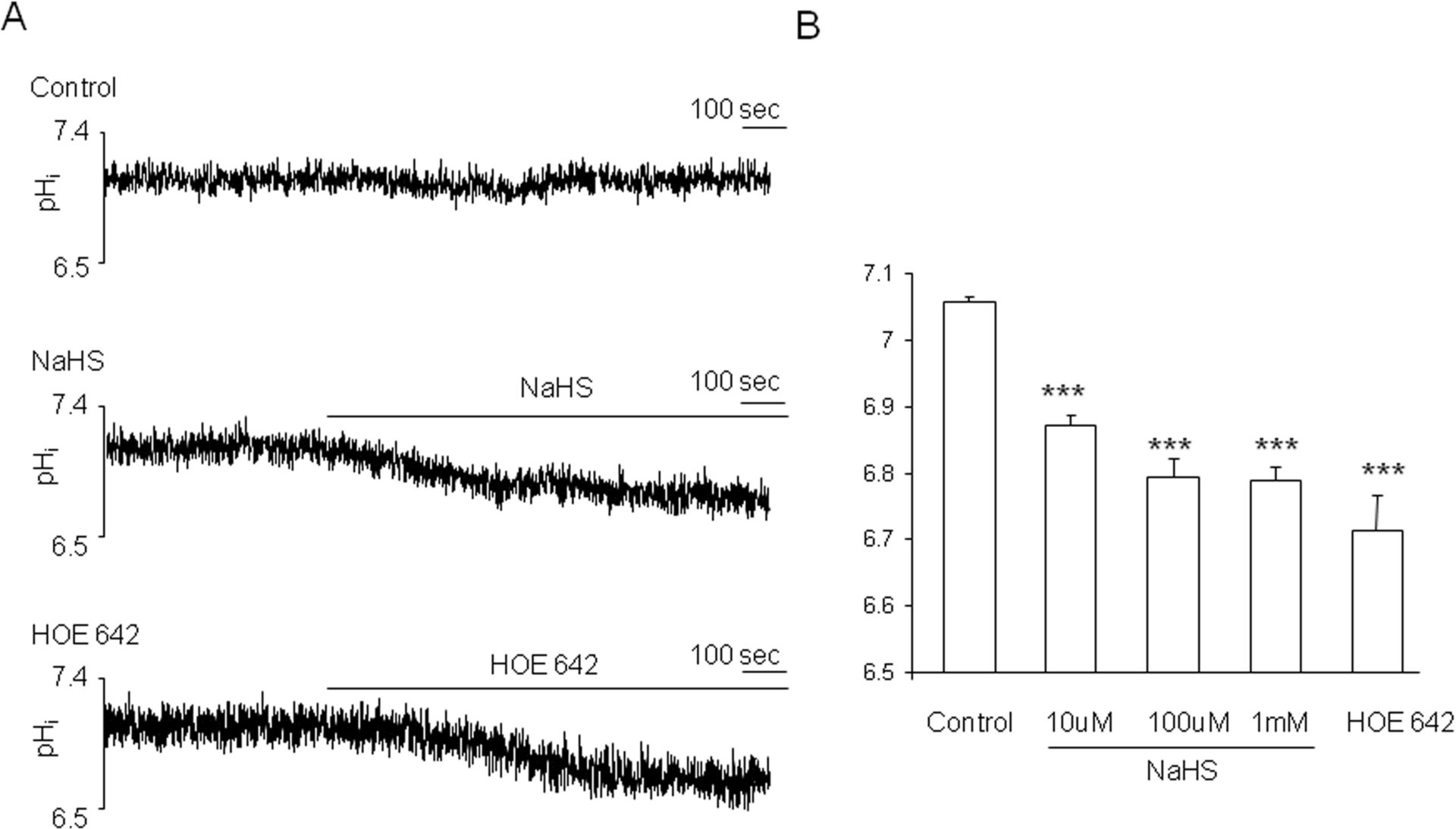Hydrogen sulfide (H2S) has recently been positioned as the third candidate of the newly emerging “gasotransmitters” family along with nitric oxide (NO) and carbon monoxide (CO) [1]. Intracellular pH (pHi) is an important modulator of cardiac function, influencing processes as varied as contraction. We previously reported that H2S regulates pHi in vascular smooth muscle and brain cells cells [2, 3]. The present study was therefore designed to investigate the pH regulatory effect of H2S in the rat cardiac myocytes and the contribution of this effect in the cardioprotective effects in rat isolated hearts. Intracellular pH was measured using a spectrofluorometer with the pH-sensitive dye, BCECF/AM. It was found that NaHS at a concentration range of 10-5-10-3 M (which yields approximately 3.3 x10-6~3.3×10-4 M H2S) produced sustained and obvious decreases in pHi in a concentration-dependent manner in the rat cardiac myocytes. NaHS also abolished the intracellular alkalinization caused by U50,488H, which activates Na+/H+ exchanger (NHE). Moreover, when measured with an NHCl4 prepulse method, we found that NaHS significantly suppressed the activities of NHE. Functional study shows that perfusion with NaHS significantly improved the post-ischemic contractile function in the isolated rat hearts subjected to ischemia/reperfusion. Blockade of phosphoinositide 3-kinase (PI3K) with LY294002 or phosphoglycerate kinase-1 with KT5823 significantly attenuated NaHS-induced suppression in NHE activity in the isolated cardiac myocytes and the cardioprotection in the isolated hearts. Western botting analysis shows that KT5823 failed to attenuate NaHS-stimulated Akt phosphorylation, suggesting that activation of phosphoglycerate kinase-1 may not be secondary to PI3K/At pathway. In conclusion, NaHS inhibited NHE activity via stimulation of PI3K/Akt and phosphoglycerate kinase-1 pathways, which may further protect heart against ischemia/reperfusion-induced injury.
University of Birmingham (2010) Proc Physiol Soc 20, C03
Oral Communications: Hydrogen sulfide regulates Na+/H+ exchanger activity via stimulation of phosphoinositide 3-kinase/Akt and phosphoglycerate kinase-1 pathways
L. Hu1, J. Bian1
1. Pharmacology, National University of Singapore, Singapore, Singapore.
View other abstracts by:
Figure 1. Hydrogen sulfide induces intracellular acidosis in single cardiac myocytes. (A) Typical tracing showing the effect of NaHS (100 μM) and HOE 642 (7 μM) on intracellular pH. (B) Concentration-dependent effect of NaHS. Mean±S.E.M., n=9-36, *** p<0.01.
Figure 2 Effect of NaHS on NHE activity in the cardiac myocytes. (A) Representative tracing for NHE activity measurement. (B) Representative tracings for pHi recovery with and without NaHS or HOE 642 treatment. (C) Mean value showing that NaHS and HOE 642 significantly inhibited NHE activity. Mean±S.E.M. n = 22-30, ***p<0.001 vs control.
Where applicable, experiments conform with Society ethical requirements.


